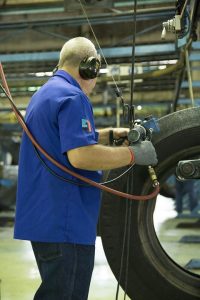 Vice President Mike Pence met with some of the nation’s leading automakers, including General Motors and Fiat Chrysler Automobiles, earlier this month to discuss proposed changes to the North American Free Trade Agreement (NAFTA).
Vice President Mike Pence met with some of the nation’s leading automakers, including General Motors and Fiat Chrysler Automobiles, earlier this month to discuss proposed changes to the North American Free Trade Agreement (NAFTA).
Established January 1, 1994, NAFTA is binding trade agreement between Canada, Mexico and the United States. It superseded the previous Canada-United States Free Trade Agreement, bringing Mexico to the table as well. While NAFTA contains numerous provisions, its primary goal is to break down restrictions and barriers that prevent trade and investment between the three aforementioned countries. When NAFTA was first enacted more than a decade ago, it eliminated tariffs on more than half of Mexico’s exports to the United States and more than one-third of the United States’ exports to Mexico.
However, there’s been talk about changing some of the provisions in NAFTA — and this has some automakers worried. One such change that’s currently being proposed is the implementation of a new minimum percentage of made-in-the-United States parts in order for a vehicle to quality for duty-free treatment. Basically, this means cars would have to be made of a certain percentage of U.S.-made parts to bypass duties. While that change may sound beneficial on the surface, automakers say it would add thousands to the cost of a new car.
Currently, NAFTA requires U.S.-made automobiles to consist of 62.5% of U.S.-made parts to bypass tariffs when they are imported to the United States. The proposed change, however, would increase this number to 85% percent, which is a pretty substantial jump to say the least.
Mike Blunt, president of the American Automotive Policy Council, stressed his concerns to Pence during the meeting. Additionally, Blunt said the focus should be strengthening currency discipline to prevent foreign nations from manipulating their policies so the U.S. dollar has a lower value than their currency.
“We believe achieving inclusion of strong and enforceable currency discipline and ensuring foreign markets accept products built to our standards are important components of a modern NAFTA agreement,” said Mike Blunt.
So, where is NAFTA headed from here? There’s really no way to tell what’s in store for the future of NAFTA. However, most analysts believe NAFTA will remain in place. While there’s been talk of the United States pulling out, it’s unlikely this will happen. Instead, we’ll probably see changes to NAFTA. The specific changes and how they will affect the United States market, however, remains to be seen.
